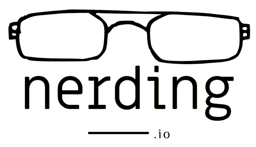Exploring the World of Coding: An Introduction to Computer Science
This activity introduces fourth-grade students to the basics of computer science through hands-on coding projects.
Exploring the World of Coding: An Introduction to Computer Science
Title: Exploring the World of Coding: An Introduction to Computer Science
Compliance: Common Core State Standards for Mathematics and Next Generation Science Standards
Subject: Computer Science
Summary: This activity introduces fourth-grade students to the basics of computer science through hands-on coding projects.
Topic: Introduction to Computer Science
Learning Outcomes:
- Understand the basic concepts of computer science
- Develop problem-solving and critical thinking skills
- Learn to code using block-based programming
- Apply computational thinking to real-world scenarios
Methodology:
This activity will be conducted over a series of lessons, allowing students to gradually build their understanding of computer science concepts. The lessons will include a combination of teacher-led instruction, hands-on coding projects, and collaborative problem-solving activities.
Resources/Materials Required:
- Computers or tablets with internet access
- Block-based coding platforms such as Scratch or Blockly
- Printed coding worksheets
- Whiteboard or blackboard
- Markers or chalk
Instructions:
Lesson 1: Introduction to Coding
Objective: Introduce students to the basic concepts of coding and computational thinking.
- Begin the lesson by discussing the importance of coding in today's world. Explain how coding is used to create websites, apps, and even control robots.
- Ask students to brainstorm examples of everyday objects or activities that involve coding.
- Introduce the concept of algorithms and explain that they are step-by-step instructions for completing a task.
- Engage students in a hands-on activity where they create a simple algorithm for making a peanut butter and jelly sandwich. Use visual aids or real ingredients to demonstrate the steps.
- Discuss the importance of precise instructions in coding and how small errors can lead to unexpected results.
Lesson 2: Block-Based Programming
Objective: Teach students the basics of block-based programming using a coding platform like Scratch or Blockly.
- Introduce students to a block-based coding platform and explain how it works.
- Guide students through a tutorial on the coding platform, teaching them how to drag and connect blocks to create simple programs.
- Provide students with coding challenges where they have to use the blocks to solve puzzles or create animations.
- Encourage students to experiment and explore different blocks and combinations to achieve desired outcomes.
Lesson 3: Applying Computational Thinking
Objective: Show students how computational thinking can be applied to real-world scenarios.
- Present students with a problem-solving scenario, such as designing a game or creating a digital story.
- Guide students through the process of breaking down the problem into smaller steps, identifying patterns, and creating algorithms to solve it.
- Allow students to work in pairs or small groups to apply their computational thinking skills and create their own projects using the coding platform.
- Encourage students to share their projects with the class and explain the algorithms they used.
Assessment:
Assessment will be conducted throughout the activity using a variety of methods:
- Observation of student participation and engagement during discussions and hands-on activities
- Review of completed coding worksheets and projects
- Informal questioning to assess understanding of key concepts
By the end of the activity, students should:
- Know: The basic concepts of coding, including algorithms and block-based programming
- Understand: How to apply computational thinking to solve problems and create projects
- Can do: Use a block-based coding platform to create simple programs and animations
 Take your blockchain skills to the next level with Nerding I/O - the ultimate learning platform for Solidity fundamentals. With engaging e-books, you'll master Solidity in no time. Purchase today and get 50% off with code MSXZCFR2V1. Join the blockchain revolution with Nerding I/O!
Take your blockchain skills to the next level with Nerding I/O - the ultimate learning platform for Solidity fundamentals. With engaging e-books, you'll master Solidity in no time. Purchase today and get 50% off with code MSXZCFR2V1. Join the blockchain revolution with Nerding I/O!